Monday, March 28, 2011
Thursday, March 24, 2011
David's address
At the bottom of this post is David's address, if you like take the time and send him a note of encouragement.
Thanks for praying. Jeff Hallmark
Cadet Diary from Depot
Have you ever wondered what it would be like to train to be an RCMP member? What do cadets do during their 24-week training? How tough is it really? And is it true cadets get a dose of OC (commonly called pepper spray) in the face? Read about it in the following diary, written by a recent cadet.
This diary documents the camaraderie among a 30-member troop, the physical and mental challenges of training and the progression from cadet to regular member of the RCMP. This cadet met those challenges head-on and now is proudly serving as a constable in the North West Region.
Week 5: Search and Seizure
“Anyone for hide-and-seek?”
2005-07-24
The calm before the storm is likely how I'll be referring to this week. The expectations seemed somewhat tame from what I'm used to, and I can't really explain why since the workload was no lighter. Maybe it's just the fact that I'm now accustomed to the demanding ways of Depot?! (Or perhaps because I did not let anything pile up - procrastination is your worst enemy around here.) Although it's calmer I still find myself with an involuntary eye twitch. Maybe that's an indication that my hat is too tight?! Other things that don't seem to fit properly include my new drop-holster. Because of my long arms I did need a lower holster, but it seems that with the new one I no longer fit between the seatbelts or the chairs in class with the same ease as before. One of many strange phenomenons!
On Saturday, a few of us visited the Sam Steele Residences and practised building entries and searches. If you're unfamiliar with this notion, I can best compare it to a game of hide-and-seek, where the police officer (PO) is the seeker and subject of interest is the seekee. The only major difference between our version and what kids play is that instead of saying: “Aha, I found you!” It's more along the lines of: “Gotcha!” Evidently the seeker is in many ways also the seekee. Although only for training purposes, it's still quite intense. Building searches are definitely not as easy as they are portrayed in the movies.
This week we attended our nutrition lecture. Yes, a nutrition lecture during which we received recommendations on healthy portions, as well as the importance of balance and proper eating habits. Quite ironic considering we are destined to eat at the mess, everyday, three times a day. If we're lucky, and if time permits, we may even have a few moments to chew our food before inhaling it. It's great when I can actually digest my food, especially considering our troop is still doubling (running) everywhere! [Ed.’s Note: Doubling is a marching term that refers to moving at double the regular pace.]
Friday was the first time the troop marched in the S/M’s Parade. [Ed.’s Note: S/M’s Parade is a shortened expression for the Sergeant Major’s Parade.] It was also the first official time we got to wear our boots. We were told that if we did well on parade that we would get to keep them (as opposed to wearing runners and doubling - boots are a promotion to marching from class to class). But of course nobody said anything to us so as usual we're left in the dark. We'll probably find out a week later that we could have been wearing them all along!
I must admit that overall I enjoy Drill more and more. The instructors all seem to have a good sense of humour, you just have to look beyond the raised voices, the stern looks and the intimidating march/walk. Each in his/her own way is quite entertaining in how they insult us. The ritual punishment offset with dark humour suits me well I guess. The bottom line is that Drill is responsible for making the troop look good in formation(s) and in turn this will make the RCMP look good. It's a constant reminder that the public is watching our every move (be it the tourists watching the parade or residents of the towns we'll be policing) and that we always want to conduct ourselves in a professional manner.
CDT David Hallmark
Troop # 20
RCMP Academy “Depot” Division
5600 11th Avenue - P.O. Box 6500
Regina, SK. S4P 3J7
Wednesday, March 16, 2011
Are You A SAINT???
With time change this past Sunday, and two nursing home services (2-2:35 & 3-3:35) I managed to get a short nap between 4 & 5.
Jeff
The Napping Habits of 8 Famous Men
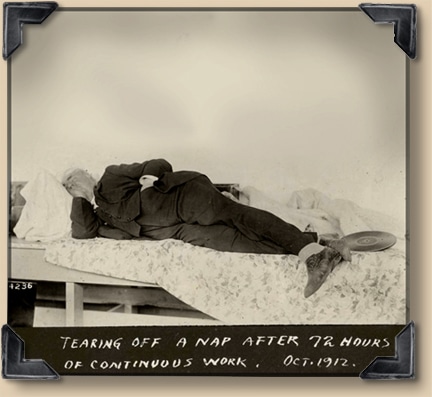
A few weeks ago, we covered the myriad of amazing benefits provided by the too-oft maligned nap. If you’re still not convinced of the benefits of napping and are in need of some additional inspiration, or, you’re simply curious about how some of history’s famous men incorporated the nap into their daily routines, today we provide a look at the napping habits of 8 eminent men.
Winston Churchill
 “Nature has not intended mankind to work from eight in the morning until midnight without that refreshment of blessed oblivion which, even if it only lasts twenty minutes, is sufficient to renew all the vital forces.”
“Nature has not intended mankind to work from eight in the morning until midnight without that refreshment of blessed oblivion which, even if it only lasts twenty minutes, is sufficient to renew all the vital forces.”
Churchill’s afternoon nap was a non-negotiable part of his relaxed approach to his daily routine. Churchill would start his day at 8 am by eating breakfast, answering letters, and dictating to his secretaries, all of which was conducted while still in bed. This bout of work was followed by a bath, a long lunch, and plenty of sipping on watered-down whisky. After lunch it was time to paint or play cards with his wife, Clementine. Then it was nap time. Churchill would take off his clothes and climb into bed for up to two hours of solid napping. At 6:30 he would rise, take another bath, and enjoy a long dinner. He finally got down to business at 11 pm and would work for several hours before going to bed and repeating the cycle over again. An unapologetic night owl, Churchill felt that his naps helped him get twice as much done each day (which makes one wonder just how little he would have worked without it!)
Nap were so sacrosanct to Churchill that he kept a bed in the Houses of Parliament and believed that napping was the key to his success in leading the country through the Battle of Britain.
Lyndon B. Johnson
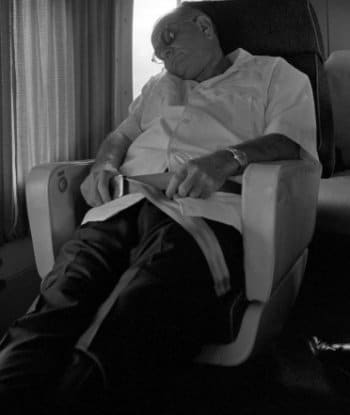
LBJ catches some winks aboard Air Force One.
When Lyndon B. Johnson assumed the presidency, he set out to pass an extremely ambitious legislative agenda, including a war on poverty, the protection of civil rights, the commencement of public works, and the cutting of taxes. To accomplish his goals, LBJ was prepared to work like a dog and to this end he adopted a “two-shift day.” He woke up at 6:30 or 7, read the newspapers, and then headed to the White House where he worked until 2 pm. He would then exercise, taking a swim or brisk walk, before donning his pajamas and settling in for a 30 minute nap. He awoke up at 4, changed into clean clothes and began his “second shift” of the day, sometimes working until 1 or 2 in the morning.
Napoleon Bonaparte
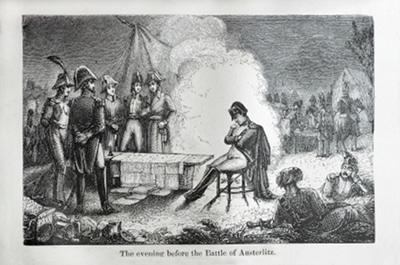 During campaigns, Napoleon was a whirlwind of energy, galloping from place to place, poring over maps, and pondering strategy. He would go days without changing clothes or lying down for a full night’s sleep. But he had the ability, as many great leaders do it seems, of being able fall asleep at the drop of a hat. This ability was likely a product of his supreme confidence. Napoleon could sleep like a baby right before battle and even when cannons were booming nearby. As they have been proven to do by modern science, Napoleon’s naps staved off the fatigue which stalks those who skip a whole night’s sleep. Then, when the storm of battle was over, the general would sleep for an eighteen hour stretch.
During campaigns, Napoleon was a whirlwind of energy, galloping from place to place, poring over maps, and pondering strategy. He would go days without changing clothes or lying down for a full night’s sleep. But he had the ability, as many great leaders do it seems, of being able fall asleep at the drop of a hat. This ability was likely a product of his supreme confidence. Napoleon could sleep like a baby right before battle and even when cannons were booming nearby. As they have been proven to do by modern science, Napoleon’s naps staved off the fatigue which stalks those who skip a whole night’s sleep. Then, when the storm of battle was over, the general would sleep for an eighteen hour stretch.
John F. Kennedy
 After a mid-morning stint of swimming and exercise, John F. Kennedy would eat his lunch in bed and then settle down for a nap. He would have his valet draw the drapes and ask not to be disturbed unless it was a true emergency. He would then quickly fall asleep for a 1-2 hour nap. Jackie would always join him no matter what she was doing when her husband’s nap commenced, leaving an assistant to entertain her guests. Head of the household staff, JB West, recalled that “during those hours the Kennedy doors were closed. No telephone calls were allowed, no folders sent up, no interruptions from the staff. Nobody went upstairs, for any reason.”
After a mid-morning stint of swimming and exercise, John F. Kennedy would eat his lunch in bed and then settle down for a nap. He would have his valet draw the drapes and ask not to be disturbed unless it was a true emergency. He would then quickly fall asleep for a 1-2 hour nap. Jackie would always join him no matter what she was doing when her husband’s nap commenced, leaving an assistant to entertain her guests. Head of the household staff, JB West, recalled that “during those hours the Kennedy doors were closed. No telephone calls were allowed, no folders sent up, no interruptions from the staff. Nobody went upstairs, for any reason.”
After awakening from his nap, Kennedy would take his second hot bath of the day, resume meetings in the Oval Office at 3:30 pm, knock off around 7:30 or 8:00, take another swim, and change his clothes for dinner. Kennedy wore at least three different sets of clothing every single day he was President.
Jackie was the one who later encouraged LBJ to take naps, telling him, “It changed Jack’s whole life.”
Thomas Edison
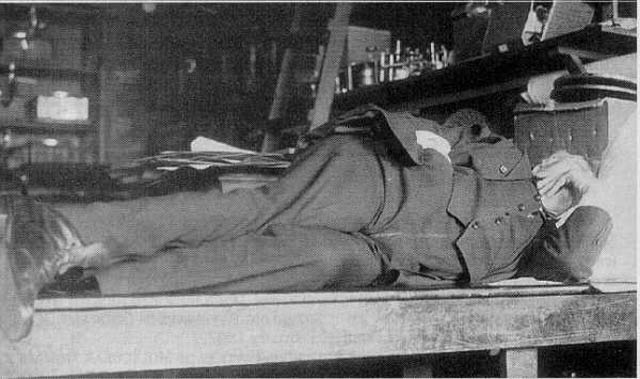 Thomas Edison was something of a self-hating napper. He liked to boast about how hard he worked, how he slept only three or four hours a night, and how he would sometimes work for 72 hours straight. But in truth the key to his spectacular productivity was something he was loathe to mention and hid from others: daily napping. Once when his friend Henry Ford paid a visit to his lab, Edison’s assistant stopped him from going into the inventor’s office because Edison was snoozing. Ford said, “But I thought Edison didn’t sleep very much.” To which the assistant answered, “He doesn’t sleep very much at all, he just naps a lot.”
Thomas Edison was something of a self-hating napper. He liked to boast about how hard he worked, how he slept only three or four hours a night, and how he would sometimes work for 72 hours straight. But in truth the key to his spectacular productivity was something he was loathe to mention and hid from others: daily napping. Once when his friend Henry Ford paid a visit to his lab, Edison’s assistant stopped him from going into the inventor’s office because Edison was snoozing. Ford said, “But I thought Edison didn’t sleep very much.” To which the assistant answered, “He doesn’t sleep very much at all, he just naps a lot.”
Edison said he could sleep “as sound as a bug in a barrel of morphine” and he often got in a couple of 3 hour naps during the day. One of his associates said that Edison’s “genius for sleep equaled his genius for invention. He could go to sleep anywhere, anytime, on anything.” Indeed, he would often curl up for his naps on a workbench or in a closet.
Stonewall Jackson
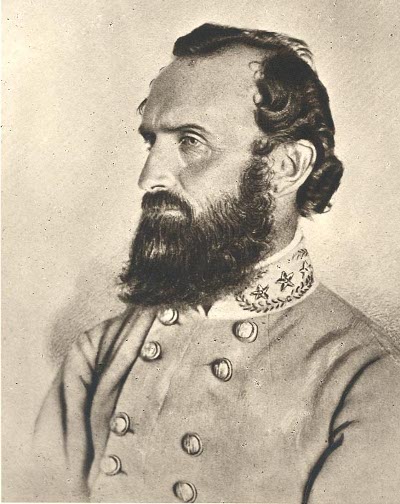 Jackson, a general cut from the same cloth as Napoleon, could nap in any place—by fences, under trees, on porches–even in the stress of war. He liked longer naps but also had the reputation for taking quick, 5 minute siestas to rest his eyes. A couple of anecdotes of the General’s napping habits from A Thesaurus of Anecdotes of and Incidents in the Life of Lieut-General Thomas Jonathan Jackson by Elihu Rile:
Jackson, a general cut from the same cloth as Napoleon, could nap in any place—by fences, under trees, on porches–even in the stress of war. He liked longer naps but also had the reputation for taking quick, 5 minute siestas to rest his eyes. A couple of anecdotes of the General’s napping habits from A Thesaurus of Anecdotes of and Incidents in the Life of Lieut-General Thomas Jonathan Jackson by Elihu Rile:
“During the fury of the struggle at Malvern Hill, Jackson was roused with great difficulty from a heavy slumber, and informed of the situation. Those around him were apprehensive of the result, for attack after attack on our part had been repulsed with severe loss. Jackson, upon recovering his consciousness, merely said, ‘McClellan is only fighting to get away. In the morning, he will be gone.’ He immediately resumed his nap, and Dr. Dabney adds that, upon hearing his opinion, he at once followed his example. When the morning light dawned upon this scene of blood, every trace of the enemy had disappeared.” –Dr. B. L. Dabney
“Talking about Jackson’s propensity to sleep, I remember after the battles of the Seven Days’ Fight around Richmond one Sunday we went to Dr. Hoge’s church. He went to sleep soon after the service began and slept through the greater part of it. A man who can go to sleep under Dr. Hoge’s preaching, can go to sleep anywhere on the face of this earth. When the service was over the people climbed over the backs of the pews to get near him, and the aisles became crowded and General Jackson embarrassed. Presently he turned to me and said: ‘Doctor, didn’t you say the horses were ready?’ and I said, ‘Yes, sir,’ and we bolted out of church.
Many a night I have kept him on his horse by holding to his coattail. He always promised to do as much for me when he had finished his nap. He meant to do it, I am sure, but my turn never came.” — Dr. Hunter McGuire
Ronald Reagan

Reagan, preaching to the converted.
Ronald Reagan was a controversial napper. Critics tried to use his rumored propensity for napping as proof of a lackadaisical approach to the presidency and a reminder of his advanced age. Nancy always denied that her husband was a napper. But his diaries show that he at least occasionally indulged in the nap, noting in reference to his daily schedule that “afternoon is still nap time” and often taking one to recharge before donning a tux and attending a formal nighttime event. He also enjoyed turkey hunts for the opportunity they provided for naps. For his part, Reagan, as he did with many things, had a sense of humor about the criticism over his napping. When he was leaving office, he joked that his cabinet chair should be inscribed with, “Ronald Reagan Slept Here.”
Salvador Dali
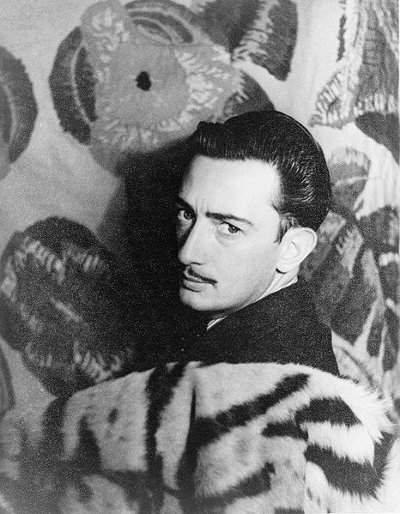 Eccentric artist Salvador Dali believed that one of the secrets to becoming a great painter was what he called “slumber with a key.” “Slumber with a key” was an afternoon siesta designed to last no longer than a second. To accomplish this micro nap, Dali recommended sitting in a chair with a heavy metal key pressed between the thumb and forefinger of the left hand. A plate would be placed upside down on the floor underneath the hand with the key. The moment Dali fell asleep, the key would slip from his finger, clang the plate, and awaken him. Dali believed this tiny nap “revivified” an artist’s whole “physical and physic being.”
Eccentric artist Salvador Dali believed that one of the secrets to becoming a great painter was what he called “slumber with a key.” “Slumber with a key” was an afternoon siesta designed to last no longer than a second. To accomplish this micro nap, Dali recommended sitting in a chair with a heavy metal key pressed between the thumb and forefinger of the left hand. A plate would be placed upside down on the floor underneath the hand with the key. The moment Dali fell asleep, the key would slip from his finger, clang the plate, and awaken him. Dali believed this tiny nap “revivified” an artist’s whole “physical and physic being.”
Dali said that he had learned the “slumber with a key” trick from the Capuchin monks and that other artists he knew also used it. Albert Einstein “napped” this way as well, as have other inventors and thinkers who believed this nap inspired their ideas and creativity. These men were unknowingly taking advantage of what scientists today call the “hypnogogic” nap, when the mind, before it reaches Stage 2 sleep, unlocks free flowing creative thoughts. It’s a topic interesting enough to warrant its own post!
Friday, March 11, 2011
Thursday, March 10, 2011
PCBBC - Grad Fred Boyer
Tuesday, March 8, 2011
Smartphone Photos online - WATCH OUT
If you have a smartphone and you take people pictures, you need to watch this video!
If you don't have a smartphone, you might want to send it your friends that do have one.
5 health reasons to not quit coffee

I really like coffee. The morning ritual of brewing a cup, the smell that perks me up before I take a sip and, of course, the flavor all make it my favorite beverage aside from water (water’s delicious!). As a registered dietitian and a nutrition editor for EatingWell Magazine, I know that coffee is fine in moderation. It has lots of antioxidants and is low in calories if you don’t load it up with cream and sugar. Nonetheless, I always feel slightly guilty about drinking it—you know, in a “it’s so good, it must be bad” kind of way.
Which is why I’m always delighted to hear of new reasons that coffee is good for your health...and there are plenty! Over 18,000 studies on coffee have been published in the past few decades, revealing these benefits, many of which Joyce Hendley wrote about in the March/April issue of EatingWell Magazine:
1. It protects your heart: Moderate coffee drinkers (1 to 3 cups/day) have lower rates of stroke than noncoffee drinkers, an effect linked to coffee’s antioxidants. Coffee has more antioxidants per serving than blueberries, making it the biggest source of antioxidants in American diets. All those antioxidants may help suppress the damaging effect of inflammation on arteries. Immediately after drinking it, coffee raises your blood pressure and heart rate, but over the long term, it actually may lower blood pressure as coffee’s antioxidants activate nitric oxide, widening blood vessels.
2. It diverts diabetes: Those antioxidants (chlorogenic acid and quinides, specifically) play another role: boosting your cells’ sensitivity to insulin, which helps regulate blood sugar. In fact, people who drink 4 or more cups of coffee each day may have a lower risk of developing type 2 diabetes, according to some studies. Other studies have shown that caffeine can blunt the insulin-sensitivity boost, so if you do drink several cups a day, try mixing in decaf occasionally.
3. Your liver loves it: OK, so the research here is limited, but it looks like the more coffee people drink, the lower their incidence of cirrhosis and other liver diseases. One analysis of nine studies found that every 2-cup increase in daily coffee intake reduced liver cancer risk by 43 percent. Again, it’s those antioxidants—chlorogenic and caffeic acids—and caffeine that might prevent liver inflammation and inhibit cancer cells.
4. It boosts your brain power: Drinking between 1 and 5 cups a day (admittedly a big range) may help reduce risk of dementia and Alzheimer’s disease, as well as Parkinson’s disease, studies suggest. Those antioxidants may ward off brain cell damage and help the neurotransmitters involved in cognitive function to work better.
5. It helps your headaches: And not just the withdrawal headaches caused by skipping your daily dose of caffeine! Studies show that 200 milligrams of caffeine—about the amount in 16 ounces of brewed coffee—provides relief from headaches, including migraines. Exactly how caffeine relieves headaches isn’t clear. But scientists do know that caffeine boosts the activity of brain cells, causing surrounding blood vessels to constrict. One theory is that this constriction helps to relieve the pressure that causes the pain, says Robert Shapiro, M.D., Ph.D., associate professor of neurology and director of the Headache Clinic at the University of Vermont Medical School.
Now, that’s not to say that coffee doesn’t have any pitfalls—it does. Some people are super-sensitive to caffeine and get jittery or anxious after drinking coffee; habitual coffee drinkers usually develop a tolerance to caffeine that eliminates this problem (but they then need the caffeine to be alert and ward off withdrawal headaches). Coffee can also disturb sleep, especially as people age. Cutting some of the caffeine and drinking it earlier in the day can curb this effect. Lastly, unfiltered coffee (like that made with a French press) can raise LDL cholesterol, so use a filter for heart health.
But if you like coffee and you can tolerate it well, enjoy it...without the guilt.
from my inbox - thanks John W.
Monday, March 7, 2011
Looks What Happens When You Fight
Hard to Believe but these pictures don't lie
Forester Jason Good was surveying timber in Meigs County, Ohio, on November 12 when he stumbled upon a bizarre sight that made the hair on the back of his neck stand up: In a waist-deep pool of Leading Creek, nose-to-nose like fish on a stringer, floated three whitetail deer.
Good spotted the deer from a distance and, at first, thought it was a single carcass. “It was close to the road, and I figured somebody had poached a deer,” he recalls. Even after a second look revealed two deer, he was about to walk away.
“I see dead deer in the woods all the time,” explains Good, who measures timber for a lumber company. “I almost ignored it until I looked again and saw it was three deer.”
From the creek bank he realized he’d found “something special” — not just three deer, but three bucks that appeared to have locked antlers.
“I sat there 20 minutes just looking at them, totally amazed, and it took that long to sink in what I was looking at,” Good says. “I thought, ‘If this is really what I think this is then I cannot screw this up.’ I wanted to make sure everything was done by the book so the landowner got to keep these horns.”
Good called the landowner, Brien Burke.
“He said, ‘Brien, I’ve found something on your property I’ve never seen before, and you’ve got to see it,’” Burke recalls. “I’m thinking a murder, a meth lab, who knows? I said, ‘Jason, just tell me what it is.’ He says, ‘It’s three bucks locked up and they’re floating dead in your creek.’”
Burke couldn’t believe it. “I could see two, but three? I asked if he was sure and he said, 'Yes.' I drove down and met him. They were floating in the creek almost like three petals of a flower or something.”
He reached out to an old college buddy who worked for the Ohio Department of Natural Resources. He advised Burke not to touch the deer and put him in contact with Joshua Shields, the ODNR conservation officer for Meigs County. Shields was too busy to examine the scene until the following Monday. “It was the peak of the rut, and I knew there’d be a lot of hunters in the field,” Burke says.
He kept the find quiet and maintained a close eye on his property until Monday rolled around.
On Monday, Burke assembled his salvage team at the site, a farm where he and his father built a hunting lodge in 1974 and where they’ve hunted ever since.
After examining the scene, which included extensive evidence of the bucks’ battle royale, Officer Shields determined the find was legit, and the salvage operation began.
The best way to untangle the pileup, Burke and Shields decided, was to sever the heads of two of the deer and remove their bodies; then the third deer would be removed intact, with the racks of the first two bucks still locked in its antlers.
“All three of the bodies were 200 pounds plus,” Burke says. “No way were we going to move them all together, and my top priority was to preserve the integrity of the lock.”
Burke’s friend Chris Davis waded into the water and zip-tied the antlers together as a precaution.
Davis prepared to begin sawing as Burke and Shields watched.
After removing the bodies of the first two deer, Burke and Shields (joined by logger Bobby Thompson, left, and forester Jason Good, right) waited for Davis to pull the last buck—with the heads of its rivals still attached—from the creek.
As Davis lifted the mass of horns above the water, the crew got their first inkling of just how remarkable a find this was.
“I knew it was something special, but I don’t think any of us knew how special until we lifted them out of the water,” Good says. “It was hard to judge the racks all tangled up under water; I thought they were three scrawny deer locked together. When they came up out of the water it made the hair on back of my neck stand up again. Holy cow!”
The combatants turned out to be an 11-pointer, a 10-pointer and a 7-pointer with an eighth broken tine.
Official Boone & Crockett scorer Jack Satterfield took on the daunting task of putting together a green score for the three intertwined racks. All together they tallied more than 400 inches of bone.
The 11-pointer (whose main beam is in the foreground here) green scored 168 4/8 gross, 156 0/8 net.
The 10-pointer grossed 138 4/8, and netted 136 2/8 green, while the 7-pointer grossed 119 0/8 and netted 108 1/8.
So what happened? Burke, who has probably spent more time than anyone poring over the puzzle of intertwined beams and tines, has a theory.
“Looking at the horns, it looks like the 7- and the 11-pointer were battling and only one side of their horns were locked,” he says. “Then the 10-pointer came in on the opposite side, and his main beam went around the base of each one of the other two deer’s antlers and his tines went up on the inside of their beams and locked them all three together.”
Damage to the creek bank and gouge marks on trees suggest the bucks locked up 50 yards downstream, then struggled together along the bank—half in and half out of the shallow water—until one of the bucks toppled into the deep hole where the deer were found
“I think one deer hit that hole and pulled the other deer into the water and they all drowned together,” Burke says. “Drowning was probably a good thing. The coyotes would have been on them in no time. I imagine they died full force, adrenaline flowing, battling it out.”
“But there’s also a certain sadness that the lives of three nice bucks just ended like that. Three deer that any hunter would have put on the wall and told stories about.”
A find at once so gruesome and awe-inspiring provokes the imagination of even the most objective wildlife observers. It vividly illustrates the intensity of the drive behind the whitetail rut, and reminds us just how high are the stakes, how intense the drive to breed for mature bucks.
Wildlife biologists are taught that anthropomorphism—endowing the animals they study with human qualities—is not good science. Yet, says Mike Tonkovich, deer project leader for the Ohio Department of Natural Resources, “I can’t help wondering what was that third buck thinking? Whatever possessed him to get engaged when the two were already entangled?”
It’s a thought that Burke echoes. “Three alpha bucks coming together at once, I just can’t imagine how brutal that must have been,” he says.
“It’s kind of neat to see evolution right there in front of you,” says Tonkovich. “This is Darwin stuff, what we learned in biology 101—those that are strongest and smartest will do the breeding. In today’s deer management world, our interest is in population dynamics or growing big bucks and age structures and so forth, but this takes you back to the basics of deer behavior and, even more simply, evolution and Darwin’s theory of natural selection.
"What you’re seeing here is one buck trying to convince another that I need to pass my genes on and I’m gonna do what it takes to make sure it happens. This is a manifestation of that drive.”
It’s also a reminder that sometimes the strongest don’t survive.
“They didn’t plan this very well, that’s for sure,” the biologist notes. “But that also adds some realism to the whole thing—that in spite of the sophistication of evolution there are hiccups that cause the system to fall apart.”
“I guess it shows us how brutal Mother Nature can be," says Burke. "It’s no Bambi story.”
Saturday, March 5, 2011
Wednesday, March 2, 2011
From My Home State - TEXAS -

Happy Texas Independence Day!
Today, 175 years ago, Texas official declared itself independent of Mexico. In the meantime, Texans have been busily filling the world with weird and useful things. Here are ten creations, inventions, developments or products from Texas.
1. Deep-Fried … Anything?
Salty, pretzel-like pockets filled with Guinness and deep-fried? I’d try it. The ravioli-shaped Fried Beer debuted last year at the Texas State Fair, alongside deep-fried frozen margarita, and the year before, deep-fried butter. Before that, the fair boasted deep-fried latte, cookie dough, Coca-Cola, Pop Tarts, lemonade and chocolate. No word yet on Deep-Fried Lipitor.
2. Dr Pepper
In the 1880s, Charles Alderton developed the 23-flavored soft drink in Morrison’s Old Corner Drug Store in Waco. The origin of Dr Pepper’s name is hazy – some think the “pep” is for pepsin, and others believe it refers to the early marketing of the soda, which like most others was called a “brain tonic” or “energizing tonic.” What we do know for certain is that the period after “Dr” was dropped in the 1950s for stylistic reasons.
3. Mary Kay Cosmetics
In 1963, Mary Kay Ash launched her company, Mary Kay Inc., in Addison. Today the company operates in 35 countries and boasts $2.8 billion in annual earnings. GM estimates that they have produced about 100,000 of the signature pink Cadillacs for top-earning Directors or Nationals.
4. Networked ATMs
Though previous versions of self-service banking machines existed, most required single-use tokens or paper vouchers and were only designed to dispense a fixed amount of cash. The first incarnation of the modern, networked ATM came in 1969, from Dallas and a guy named Donald Wetzel. He headed up Docutel, which until then had produced automated baggage-handling machines. In 1971, the company had developed the “total teller” model, which could take deposits, transfer money from checking to savings, savings to checking, get cash advances to from credit card, and take payment. Their patent was secured in 1973 and in 1995, the Smithsonian National Museum of American History recognized Wetzel and Docutel as the inventors of the networked ATM.
5. The Rodeo
Pecos, TX, claims to be the Home of the World’s First Rodeo, held on July 4, 1883. The event is still held every year on Independence Day, but the first official rodeo competition was held in Cheyenne, WY, in 1872. (Sorry, Texas.)
6. Jalapeno Jelly
Some enterprising and adventurous soul in Lake Jackson developed a mixture of jalapeno and bell peppers, sugar, gelatin and vinegar. Rather surprisingly (to me, anyway), it was a hit, and the concoction was first marketed commercially in 1978. Jalapeno jelly is a bit of, um… an acquired taste, but fans spread it on everything from biscuits to burgers.
7. Dynamic Random Access Memory (DRAM)
Perhaps one of computer technology’s more important developments, dynamic RAM, was invented by Dr. Robert Dennard of Terrell, TX, in 1968. The Intel 1103, the first piece of hardware incorporating Dennard’s design, was released by IBM in 1970. By 1972 it was the best-selling semiconductor memory chip in the world, completely obliterating the previous magnetic core technology.
8. Liquid Paper
Bette Claire Nesmith, single mother of Monkee Michael Nesmith and native of Dallas, was a part-time artist and the executive secretary at Texas Bank and Trust. The early-model electric typewriter she used at the bank made correcting mistakes extremely difficult, but she drew on her experience painting windows to come up with an easier method. Said Nesmith, “[W]ith lettering, an artist never corrects by erasing, but always paints over the error. So I decided to use what artists use. I put some tempera water-based paint in a bottle and took my watercolor brush to the office. I used that to correct my mistakes.” In 1956, she had a perfected formula, which she marketed under the Liquid Paper brand. In 1979, Nesmith sold the company to Gillette for $47.5 million.
9. The Most Powerful Laser in the World
After establishing the Texas Center for High Intensity Laser Science at the University of Texas at Austin (or UT), the research center developed and constructed a 1.1 petawatt laser, the most powerful currently in use. (Previously, a system installed at Lawrence Livermore National Laboratory broke the petawatt barrier, but it was dismantled in 1999.) For a tenth of a femtosecond (or one tenth of one-trillionth of a second), the Texas Petawatt Laser’s pulse is as powerful as all the power plants in the US. Also, the beam reportedly “is brighter than sunlight on the surface of the Sun.”
10. The Adopt-A-Highway Program
For more on that, read fellow _flosser Scott Allen’s article, “Own the Road: A Brief History of the Adopt-a-Highway Program.”








